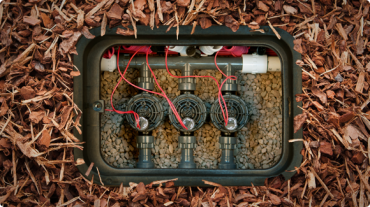Solenoid Control Valves
Solenoid Valves are widely used in hydroponics for automating the flow of nutrient solutions to various areas of a hydroponic system.
The valves are electrically operated (usually 24V AC) and are connected to an irrigation controller or an advanced fertigation controller.
A simple description of how they work:
The irrigation controller sends an electrical signal to the solenoid valve which energises a coil inside it. This allows an internal diaphragm to be lifted allowing pressurised water to pass through the valve. After a pre-determined period of time has passed (e.g 3 minutes) the irrigation controller will signal the valve to close thereby ending the irrigation cycle.
Multiple solenoid valves can be wired into an irrigation or fertigation controller, with each valve able to perform a different function if required.
The tasks commonly performed by solenoid control valves in a hydroponic system are as follows:
- Automatically filling a hydroponic mixing tank with fresh water at a set time.
- Dosing nutrient stock solutions & pH corrector into a hydroponic mixing tank (see the page Solenoid Dosing Valves).
- Stirring a hydroponic mixing tank by opening a pump bypass.
- Allowing a series of irrigation zones to be irrigated one after the other in isolation.
- Dividing a greenhouse into multiple irrigation zones, each with their own fertigation program. Plants are usually fed via pressure compensated drippers within each zone.
- Dividing a pressurised misting system into multiple zones containing misting nozzles connected to lateral tubing.
There are various types of solenoid valves available which are suited for each application and pipe size.
Please contact Pure Hydroponics to discuss your requirements so we can recommend the best valve for your purpose.



